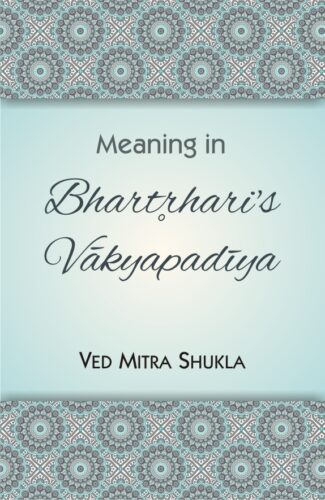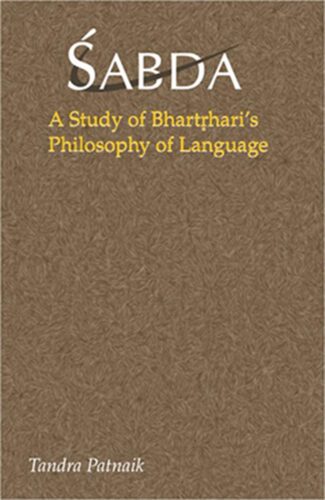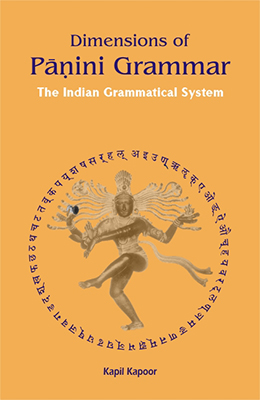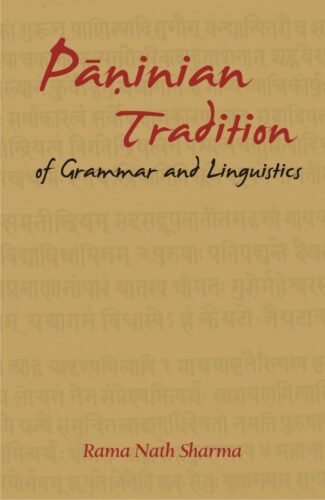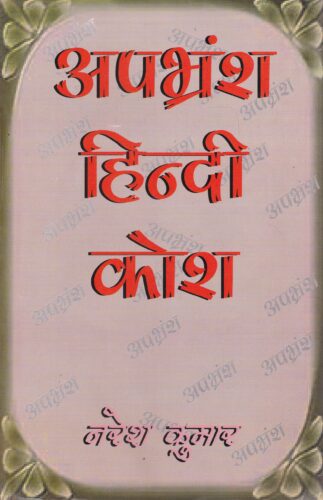

Apbharamsa Hindi Kos...
Apbharamsa Hindi Kosha
Apabhramsa-Hindi-Dictionary by: Naresh KumarThis Dictionary of Hindi Apabhramsa gives in detail the grammatical importance of words, their meanings, correct spellings, the alternate words and their various usages as mentioned by lexicographer Naresh Kumar.
₹1,500.00 Original price was: ₹1,500.00.₹1,350.00Current price is: ₹1,350.00.
ISBN: 9788124601365
Year Of Publication: 1999
Edition: 1st
Pages : xlv, 869
Language : Hindi
Binding : Hardcover
Publisher: D.K. Printworld Pvt. Ltd.
Size: 23 cm.
Weight: 1500
This Dictionary of Hindi Apabhramsa gives in detail the grammatical importance of words, their meanings, correct spellings, the alternate words and their various usages as mentioned by lexicographer Naresh Kumar.

- Sale!Rated 5.00 out of 5Meaning in Bhartrharis Vakyapadiya by: Ved Mitra Shukla
₹650.00Original price was: ₹650.00.₹585.00Current price is: ₹585.00.The study of grammar and linguistic philosophy had its origin in the Vedic period, at least in the second millennium BCE. The Vakyapadiya of Bhartrhari, an authoritative Sanskrit text written in the fifth century CE, contains reflections on the subject matter of language and grammar, thus the philosophy of language. Interpretation of communication is one of the principal objectives of Bhrtrhari’s philosophy of language. His goal is to interpret the communication of all living things, be it a man or an animal, or a yogi or a baby. Bhartrhari represents a rich tradition of Indian philosophy of language that he inherited from Panini and Patatijali. The West, for all practical purposes, lagged behind in grammar, literary theories, philosophy of language and with the problems of meaning, even at the dawn of the twentieth century, when the Indian Grammarians made penetrating studies on the same even before the common era.
- Sale!Philosophy of Language in Classical Indian Tradition by: K.S. Prasad
₹850.00Original price was: ₹850.00.₹765.00Current price is: ₹765.00.Philosophical query into the working of language has occupied an important place in the rich tradition of thought in India since the ancient times. This book throws light on various debates in classical Indian Philosophical tradition concerning the structure of language and meaning. Papers in this book have been arranged in four groups basing on their thematic composition. The book begins with the general issues relating to language as figured in classical schools of Indian philosophy. Papers dealing with the semantic structure of language as discussed by Bhartrhari in his Vakyapadiya follow this. The next set of papers is related to some of the important semantic notions of Nyaya philosophy of language. In this respect notions like sense, reference, proper names, meaning, etc., have figured in for discussion. The last set of papers is concerned with the import of sentences wherein papers dealing with Purva-Mimamsa are included. One of the significant features of this volume is that some of the issues and problems in Indian Philosophy of language have been approached from the contemporary Western perspective with a view to explicate and evaluate them in a better way and this would be of considerable interest to scholars and students of philosophy, particularly those involved in the study of classical Indian philosophy.
- Sale!Sabda by: Tandra Patnaik
₹800.00Original price was: ₹800.00.₹720.00Current price is: ₹720.00.It is the first ever study of the fifth-century scholar, Bhartriharis Vakyapadiya in an altogether modern, the post-Fregean, perspective on the Philosophy of Language. A uniquely original thinker in Indias splendid grammarians tradition, Bhartrihari overreached the limits of language analysis set by his predecessors like Panini and Patanjali constructing, as he did, a brilliant Philosophy of Language that sought to spell out, among other aspects, the subtle distinctions between the knowable and the sayable, between what is said and what is meant, between the semantics of everyday speech and literary discourse. Sadly, Bhartrihari has, through the centuries, suffered neglect, largely because the Grammarian School never figured in the six major systems of traditional Indian philosophy.
For the first time, this monograph tries to reinterpret Bhartriharis position as a philosopher, emphasizing the high relevance of his Vakyapadiya to modern Western thought. A reputed scholar of grammar, philosophy and Sanskrit studies, the author presents Bhartriharis analyses of language methodically, unbiased. And, significantly, in contemporary philosophical idiom with contextual focus on the views of modern Western philosophers: Frege, Wittgenstein, Grice, Austin, Davidson, Searle, Strawson and the like. Also offered here is a lucid exposition of the Sphota Theory.
Growing from Dr Patnaiks a decade-long research on Bhartriharis philosophy, the volume highlights not only ancient Indian contribution to the study of language, but the interconnectedness among its indigenous approaches to linguistics, philosophy, logic and aesthetics as well. - Sale!Dimensions of Panini Grammar by: Kapil Kapoor
₹950.00Original price was: ₹950.00.₹855.00Current price is: ₹855.00.Leonard Bloomfield described Panini’s Ashtadhyayi (7th century bc) as ‘one of the greatest monuments of human intelligence.’ It is a complete, explicit and comprehensive grammar of both spoken and textual (compositional) Sanskrit. Most of the reputed and renowned Indian and foreign universities running courses on Indian knowledge systems, study it for its principles of analysis, organization and description. What is of great interest is the theoretical framework that informs this grammar, a framework that has remarkable power to describe human languages, particularly the Indian languages.
Panini is the watershed in the linguistic history of India. Before Panini, there was extensive work in phonetics, in morphology and lexicon (in the patha tradition) and in nirvacana (etymology). There is evidence also of the existence of several schools of grammar. In what is characteristic of the Indian intellectual traditions, Panini distilled the available grammatical knowledge and put it in 32000 syllables — as if, it has been said, an ocean has been accommodated in a cow’s hoof-mark. After Panini, a whole tradition developed and produced rich works by Patanjali, Candrakirti, Jainendra, Bhartrihari, Bhojraja, Hemacandracarya, Bhattoji Dikshita, Nagesha Bhatta and many others. It also inspired work in literature and philosophy and has left its mark on the entire intellectual tradition. In the modern period, there is a spread of Ashtadhyayi studies round the globe and it has proved to be of great interest for the study of knowledge representation in the departments of system sciences.
A comprehensive study of the different dimensions of this wonderful grammar enlarges and alters the conceptual horizons of young minds and of all those who care to be associated with the Indian grammatical systems. This book is a record of that adventure. - Sale!Paninian Tradition of Grammar and Linguistics by: Rama Nath Sharma
₹900.00Original price was: ₹900.00.₹810.00Current price is: ₹810.00.The Sanskrit Tradition of Grammar and Linguistics, along with its history, is presented in view of texts and trends, where structure and content of the Ashtadhyayi find their focus on rule formulation, interpretation, and interaction. My proposal of derivation is made in view of what Panini does (acarya-pravritti) with rules of the Ashtadhyayi, and what statements (vyakhyana) were made on a given topic by Patanjali.
My presentation is all tied in with the interpretive conventions # (2) yathoddeshah samjna-paribhasham, and # (3) karyakalam samjna-paribhasham (PS) of Nagesha. It yields two kinds of ekavakyata considerations where one facilitates interpretation of a rule within adhikakars, and the other facilitates ekavakyata across domains, with no anuvritti consideration. Finally the derivational history yields a string of definitions which not only offer direction to individual derivations but also projects what rules will apply when and on what kind of string. Why does Panini repeat the use of definition terms in the Ashtadhyayi, so that they can clearly chart the path of derivation, and facilitate reconstruction of history of derivation? This all is new, and is in consonance with the tradition. The last section of this book presents a comprehensive view of modern studies on Panini to modern times.



